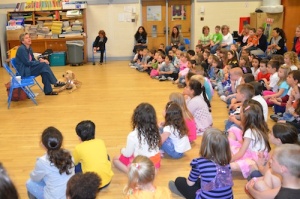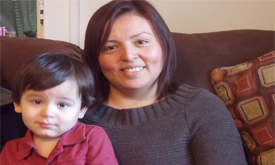A groundbreaking video game character with a mysterious limp
by MacKenzie Olsberg
 I’ve been playing all sorts of games for a long time – including video games. I still remember playing Duck Hunt and Mario on the NES (Nintendo Entertainment System) when I was little. A lot of the exercises that 8-year-old me did with my speech therapist involved board games. Games still help me decompress after a long day. They let me in on worlds that have never existed and provide me with short escapes from my real life. It’s fun to become someone new every once in a while, and I especially like it when I get to turn into someone much more magical.
I’ve been playing all sorts of games for a long time – including video games. I still remember playing Duck Hunt and Mario on the NES (Nintendo Entertainment System) when I was little. A lot of the exercises that 8-year-old me did with my speech therapist involved board games. Games still help me decompress after a long day. They let me in on worlds that have never existed and provide me with short escapes from my real life. It’s fun to become someone new every once in a while, and I especially like it when I get to turn into someone much more magical.
I’d been hearing a lot about a non-playable character (NPC, a character you can’t control) named Taimi on Guild Wars 2 (a very popular massive multiplayer online, or MMO, game) and have been eager to check her out. Guild Wars 2 ended a chapter in their Living Story update recently, and that’s how I finally got to see Taimi. It was love at first sight.
Taimi is a pintsize ball of fire with a witty dialogue. How could I not adore her? I was admiring her character model (animation degree here) and enjoying the character dialogue between my character and the others when Taimi moved across the room—and limped.
What was this?
I checked her for any debuffs (when a character is poisoned, wounded or bleeding, they get a “debuff” that either takes away health or makes it more difficult to use their skills), but I couldn’t find any. The other character in the room also had a limp, too, but a wounded debuff explained that.
Why no debuff for Taimi?
So I had to look up this intriguing new character. According to the official wiki, Taimi is 13 years old and a genius among her peers. She is a brilliant engineer determined to defeat the evil baddies. She also has an incurable degenerative disease that makes walking long distances difficult.
Wait. Did I read that right? A video game character…that isn’t “perfect”? People with disabilities are a population that is usually completely overlooked by the gaming community. I’ve been gaming for a long time, but I’ve never seen such a thing before. If you ask me, this is a huge step in the disability community. Guild Wars 2 made a NPC with a disability. This means everyone who plays the game will see this character and realize that while some people may have a disability like Taimi, they can still one-shot you and be amazing.
By the way, “one shot” means that a player or NPC can kill something with only one click of a skill. It takes a lot to do that, and it’s usually a sign that the player or NPC is super-strong. I feel touched by this character, and so did many other people on the Guild Wars 2 forums. One woman who left a comment on the Guild Wars 2 forum has multiple sclerosis. She said that it was wonderful to finally see a character she could identify with, and she wanted to send the company cookies as thanks.
I think the way Guild Wars 2 portrays Taimi’s non-playable character is fantastic. She is not pitiable or weak, they made her strong, determined and crafty enough to build a customized golem to ride on and fight with. This game has been breaking a lot of rules when it comes to MMO’s, and after the introduction of such a neat NPC, I look forward to seeing what else they might do in the years to come.
Now if only I could get a golem like that in real life…
Other Media Reviews Recently Posted on Our Blog:







 That’s us at Daniel Street School in Lindenhurst; clearly, my Seeing Eye dog Whitney is ready for her close-up. I wrote a
That’s us at Daniel Street School in Lindenhurst; clearly, my Seeing Eye dog Whitney is ready for her close-up. I wrote a  The good folks of Saints Cyril and Methodius Catholic School gave us flowers. One of the schools we visited was
The good folks of Saints Cyril and Methodius Catholic School gave us flowers. One of the schools we visited was 






